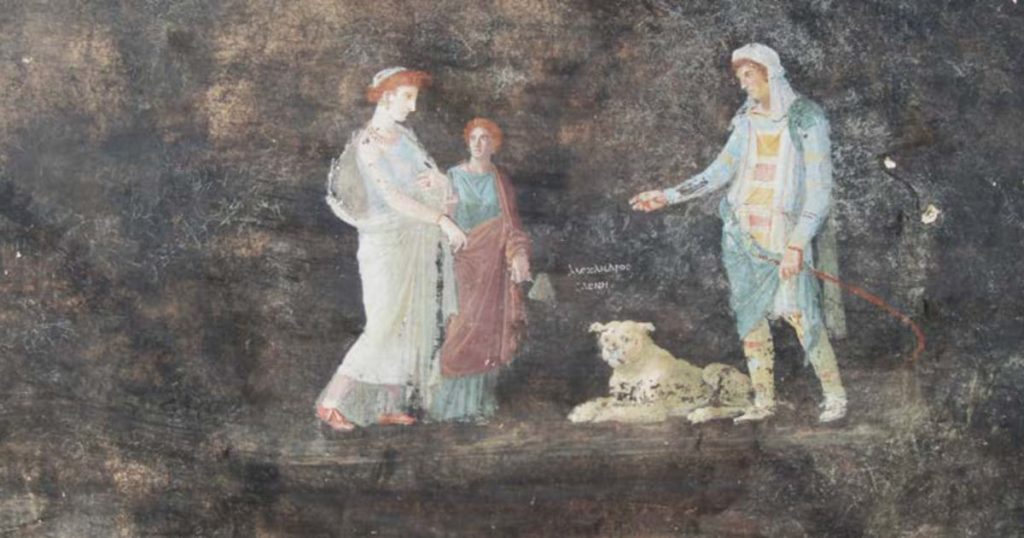A remarkable discovery of a series of well-preserved frescoes depicting scenes from the Trojan War, including Helen of Troy and other Greek heroes, has been unearthed in Pompeii after almost 2,000 years. Found inside what archaeologists have described as a stunning dining room with unique black walls, the paintings were inspired by the epic tale recounted by the Greek poet Homer. The discovery comes from a never-before-excavated area of Pompeii, which was destroyed in the eruption of Mount Vesuvius in 79 A.D.
These elaborate classical paintings were likely intended as showpieces and talking points for wealthy Romans who entertained guests in their homes. They provided a refined setting for banquets and conversations, reflecting an elegant lifestyle. Pompeii and nearby Herculaneum were popular seaside resorts for the wealthy elite, devastated by the volcanic eruption that lasted over 24 hours and had immense destructive power.
The extraordinary frescoes show scenes of heroism, fate, and the possibility for humans to change their destiny, inspired by the stories of Greek mythology such as the Trojan War. The themes of heroism, fate, and the influence of the gods would have been familiar to wealthy Roman citizens who owned houses in Pompeii and Herculaneum. These stories were central to their culture, as the Romans believed they were descended from the people involved in the events at Troy.
The discovery also sheds light on the aesthetics and design choices of the period, with the black walls and flickering light of oil lamps likely creating a dramatic effect that made the paintings appear to move. While some argue the black walls were practical, serving to hide lamp smoke, others see it as a deliberate aesthetic choice that would have been impressive to ancient visitors. The discovery underscores the fact that a significant portion of Pompeii remains buried and unexplored by archaeologists, providing opportunities for further excavation and discovery in the future.
The frescoes, found in a room that opens onto a courtyard with a staircase leading to the first floor, are in remarkably good condition, spurring speculation that they may have been painted shortly before the eruption of Mount Vesuvius. Abandoned tools, building materials, and less impressive artwork found nearby lend weight to this theory. The discovery of the initials ARV on a wall may suggest the villa’s owner was Aulus Rustius Verus, a wealthy politician of the time.
This exciting find is part of a larger project aimed at protecting and preserving both the excavated and unexcavated areas of Pompeii, which contain over 13,000 rooms in 1,070 houses and apartments. The focus is shifting towards safeguarding what has already been uncovered rather than seeking new discoveries, highlighting the vast potential for further exploration and revelations within the ancient city. The frescoes offer a tantalizing glimpse into the opulent lifestyles and cultural beliefs of the wealthy Romans who once inhabited the city, reinforcing the enduring fascination with the history and archaeology of Pompeii.


